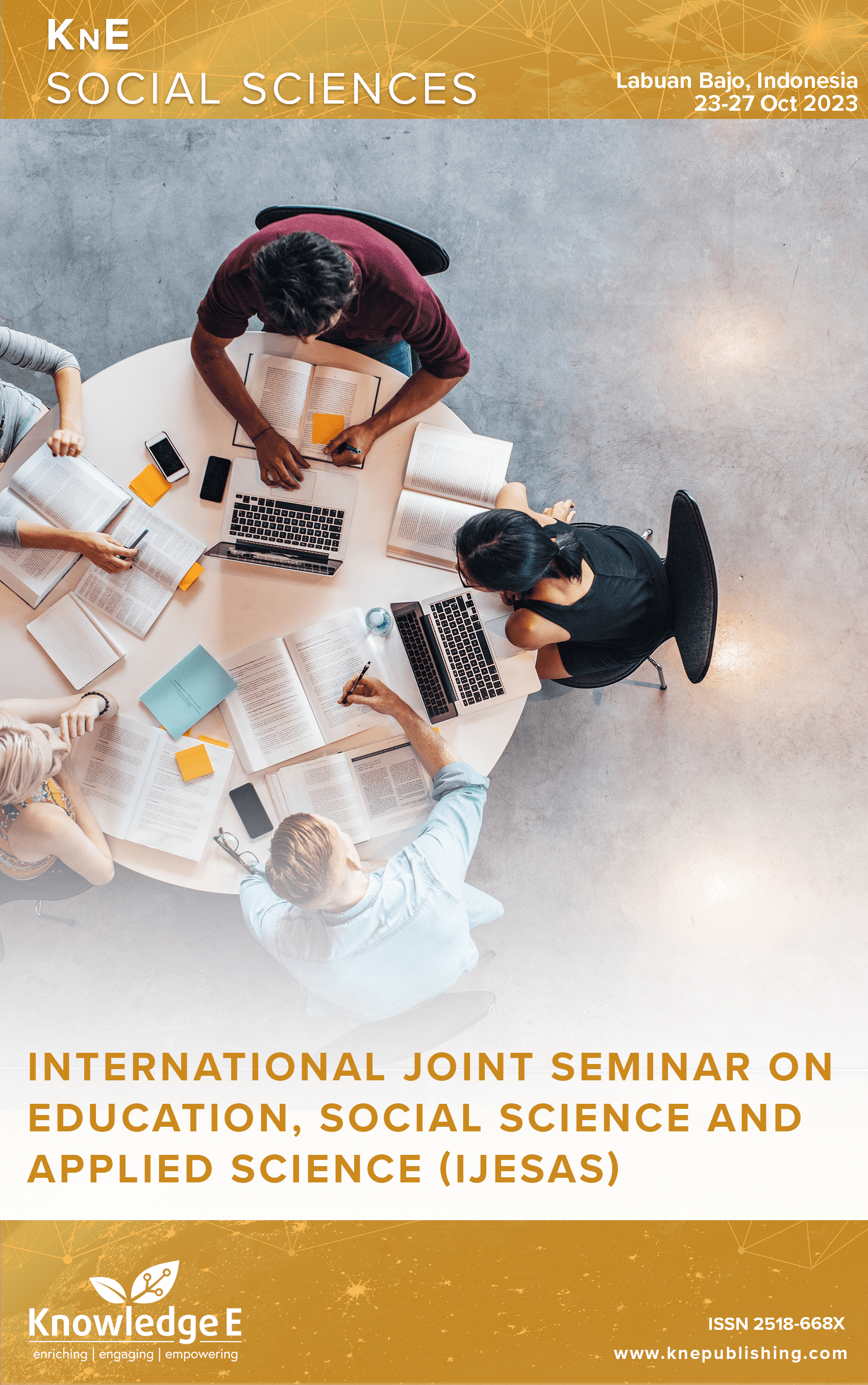Bibliometric Analysis of 21st Century Skills in Practical Laboratory Learning Research Trends from 1986 to 2023 Using RStudio Bibliometrix and VOSViewer Software Tools
DOI:
https://doi.org/10.18502/kss.v9i19.16523Abstract
The acceleration of technological advancements and globalization underscores the importance of 21st-century skills in practical learning contexts. This manuscript presents a comprehensive bibliometric analysis of scholarly publications from 1986 to 2023, delineating the evolution and trends of research in 21st-century skills within practical learning environments. Utilizing the robust capabilities of RStudio’s Bibliometrix and VOSviewer tools, we systematically quantify and visualize the data, providing a metaanalysis of the existing literature. Our analysis encompasses publication output, citation patterns, keyword frequency, thematic concentrations, and collaborative networks. We reveal significant growth in research interest, particularly in areas such as critical thinking, collaboration, communication, and creativity, often referred to as the “4 Cs” of 21st-century skills. The study identifies key authors, influential institutions, and pivotal publications that have shaped the discourse. Moreover, it highlights interdisciplinary collaborations and the geographical distribution of contributions, offering insights into the global research landscape. Our findings suggest that practical learning pedagogies are increasingly integrating 21st-century competencies, reflecting a paradigm shift towards skills that prepare students for the demands of the modern workforce and society. This work not only serves as a barometer for past and present research trajectories but also provides a scaffold for future inquiries in the domain of practical and experiential education.
Keywords: bibliometric analysis, 21st century skills, practical laboratory learning, vosviewer, rstudio
References
OECD. “Pisa 2015 Draft Collaborative Problem Solving Framework March 2013.,” Oecd. no. March 2013, p. 89, 2015.
Gauvain M. Collaborative Problem Solving: Social and Developmental Considerations. Psychol Sci Public Interest. 2018 Nov;19(2):53–8. DOI: https://doi.org/10.1177/1529100618813370
Lamb S, Maire Q, Doecke E. Key Skills for the 21st Century: An Evidence-Based Review. Future Frontiers Analytical Report. 2017;27(3):1–71.
OECD. PISA 2015 Collaborative Problem-Solving Framework. J Learn Sci. 2017;2(2):1–5. DOI: https://doi.org/10.1787/9789264281820-8-en
Liebech-Lien B, Sjølie E. Teachers’ conceptions and uses of student collaboration in the classroom. Educ Res. 2021;63(2):212–28. DOI: https://doi.org/10.1080/00131881.2020.1839354
Judge DS, Murray B, Hughes-Gay M, Robinson D. Building bridges: collaboration between community college and university. Teach Learn Nurs. 2016;11(2):58–61. DOI: https://doi.org/10.1016/j.teln.2015.12.001
Griffiths B. Preparing Tomorrow’s Nurses for Collaborative Quality Care Through Simulation. Teach Learn Nurs. 2018;13(1):46–50. DOI: https://doi.org/10.1016/j.teln.2017.08.005
Latorre-Cosculluela C, Suárez C, Quiroga S, Sobradiel-Sierra N, Lozano-Blasco R, Rodríguez-Martínez A. Flipped Classroom Model Before and During COVID-19: Using Technology to Develop 21st Century Skills. Interact Technol Smart Educ. 2021;18(2):189–204. DOI: https://doi.org/10.1108/ITSE-08-2020-0137
Ozturk O. Bibliometric Review of Resource Dependence Theory Literature: an Overview. Management Review Quarterly. 2021;71(3):525–52. DOI: https://doi.org/10.1007/s11301-020-00192-8
Liang Z, Mao J, Lu K, Ba Z, Li G. Combining Deep Neural Network and Bibliometric Indicator for Emerging Research Topic Prediction. Inf Process Manage. 2021;58(5):102611. DOI: https://doi.org/10.1016/j.ipm.2021.102611
Kuswandi D, Kurniawan C, Aulia F, et al. “Visualizing Trend of 21st-Century Curriculum: A Bibliometric Analysis.,” … on Education and … vol 601., no. Icet, p.p 38–44, 2021
Marmoah S, Gestiardi R, Sarwanto S, Chumdari C, Maryani I. A bibliometric analysis of collaboration skills in education (2019-2021) [EduLearn]. Journal of Education and Learning. 2022;16(4):542–51. DOI: https://doi.org/10.11591/edulearn.v16i4.20337
Safitri ND, Darmayanti R. Usmiyatun, and D. Nurmalitasari, “21st Century Mathematics Learning Challenges: Bibliometric Analysis of Trends and Best Practices in Shinta Indexed Scientific Publications.,” Jurnal Edukasi Matematika dan Sains). vol. 11, no. 1, pp. 136–152, 2023.
Izhar NA, Ishak NA, Baharudin SM. A Bibliometric Analysis of 21st Century Learning Using Scopus Database. International Journal of Learning, Teaching and Educational Research. 2023;22(3):225–40. DOI: https://doi.org/10.26803/ijlter.22.3.14
Misbah M, Hamidah I, Sriyati S, Samsudin A. A Bibliometric Analysis: Research Trend of Critical Thinking in Science Education. Journal of Engineering Science and Technology. 2022;17( June):118–26.
Syahrial AH, Wibowo FC, Nasbey H. “Visualizing Trend of 21st-Century Skills Over the Last 20 Year: A Bibliometric Analysis.,” In: Prosiding Seminar Nasional Fisika. pp. 21–33 (2023).
van Eck NJ, Waltman L. Software survey: VOSviewer, a computer program for bibliometric mapping. Scientometrics. 2010 Aug;84(2):523–38. DOI: https://doi.org/10.1007/s11192-009-0146-3
Shen X, Wang L. Topic Evolution and Emerging Topic Analysis Based on Open Source Software. J Data Inf Sci. 2020;5(4):126–36. DOI: https://doi.org/10.2478/jdis-2020-0033
Zhu J, Liu W. A Tale of Two Databases: The Use of Web of Science and Scopus in Academic Papers. Scientometrics. 2020;123(1):321–35. DOI: https://doi.org/10.1007/s11192-020-03387-8
Ding X, Yang Z. Knowledge Mapping of Platform Research: a Visual Analysis Using VOSviewer and CiteSpace. Electron Commerce Res. 2022;22(3):787–809. DOI: https://doi.org/10.1007/s10660-020-09410-7
Thelwall M. Bibliometrics to webometrics. J Inf Sci. 2008;34(4):605–21. DOI: https://doi.org/10.1177/0165551507087238
Quintero LK, Pardo MA, Plazas AF. “Collaborative work as a teaching-learning strategy, a powerful tool for the 21st century.,” Proceedings of the LACCEI international Multi-conference for Engineering, Education and Technology. vol. 2019-July, no. July, pp. 24–26, 2019.
Lippi G, Plebani M. Clinical Chemistry and Laboratory Medicine: enjoying the present and assessing the future. Clin Chem Lab Med. 2022 Jul;60(9):1313–5. DOI: https://doi.org/10.1515/cclm-2022-0627
Mubarok H, Suprapto N, Adam AS. Using Inquiry-Based Laboratory to improve students’ Higher Order Thinking Skills (HOTs). J Phys Conf Ser. 2019;1171(1):1–6. DOI: https://doi.org/10.1088/1742-6596/1171/1/012040
Wieringa G. Teaching the pony new tricks: competences for specialists in laboratory medicine to meet the challenges of disruptive innovation. Clin Chem Lab Med. 2019 Feb;57(3):398–402. DOI: https://doi.org/10.1515/cclm-2018-0609
McAllister GD, Parsons AF. Going Green in Process Chemistry: Optimizing an Asymmetric Oxidation Reaction To Synthesize the Antiulcer Drug Esomeprazole. J Chem Educ. 2019 Nov;96(11):2617–21. DOI: https://doi.org/10.1021/acs.jchemed.9b00350
Irwanto AD. Saputro, E. Rohaeti, and A.K. Prodjosantoso, “Using inquiry-based laboratory instruction to improve critical thinking and scientific process skills among preservice elementary teachers.,”. Eurasian Journal of Educational Research. 2019;2019(80):151–70.
White R. Incorporating Sustainability in Textile Effluent Treatment Facilities. Int J Environ Technol Manag. 2002;2(1–3):279–90. DOI: https://doi.org/10.1504/IJETM.2002.000791
Hofstein A, Mamlok-Naaman R. The laboratory in science education: the state of the art. Chem Educ Res Pract. 2007;8(2):105–7. DOI: https://doi.org/10.1039/B7RP90003A
Shute VJ, Rahimi S. Review of computer-based assessment for learning in elementary and secondary education. J Comput Assist Learn. 2017;33(1):1–19. DOI: https://doi.org/10.1111/jcal.12172
J. Gasco, T.J. Holbrook, A. Patel, et al., “Neurosurgery simulation in residency training: Feasibility, cost, and educational benefit.,” Neurosurgery. vol. 73, no. SUPPL. 4, pp. 39–45, 2013. https://doi.org/10.1227/NEU.0000000000000102. DOI: https://doi.org/10.1227/NEU.0000000000000102

